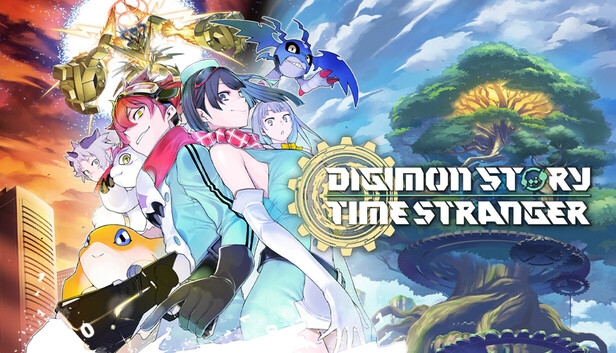Digimon has always excelled at leveraging nostalgia, and Digimon Story: Time Stranger, the seventh installment in the RPG series, is no exception. Like previous Digimon Story titles, this game emphasizes narrative, but it was the creature collection and turn-based battles that compelled me to keep playing long after my three-hour preview session ended.
Unlike past games, Time Stranger`s protagonist is an adult secret agent investigating Digimon-related phenomena. I started the game from the very beginning of the story, where the influence of the Digital World on Earth is shown. You can choose the protagonist`s gender, and the other character becomes your partner, communicating via a pocket-sized hologram. The introduction beautifully sets the stage for the clash of two worlds: ordinary citizens discuss unexplained disasters, and protestors accuse authorities of withholding information.
But all of this merely serves as a backdrop for the core gameplay experience. The Digimon Story sub-series is known for its narrative-driven core, typically complemented by turn-based gameplay. Producer Ryosuke Hara, who also worked on Dragon Ball Z: Kakarot, focused specifically on `battle balance.` At 36, he was part of the target audience when Digimon Adventure first launched in 1999.

“We wanted to improve several aspects compared to previous Digimon Story installments, but battle balance was a particular focus,” he told me through a translator. “I think in prior versions, players relied too heavily on specific characters rather than balanced teams. So, for this title, we aimed to significantly enhance the RPG combat aspect of the battles.”
Time Stranger introduces us to its primary `type triangle,` akin to the fire, water, and grass elements in Pokémon or the axe, sword, and lance system in Fire Emblem. This system operates similarly to earlier Digimon Story games like Cybersleuth. While Digimon attacks might have secondary elemental weaknesses, a Digimon`s main classification type heavily dictates its strengths and weaknesses. To illustrate this, Time Stranger allows you to choose one Digimon of each type as your starter: Patamon (Data), Gomamon (Vaccine), or Deviveemon (Virus).
I chose Patamon, as his partner in Digimon Adventure was one of my favorite characters growing up. Patamon easily handled most enemies I encountered in the first thirty minutes, but thereafter, I needed to rely on other Digimon, such as Koromon, to exploit type weaknesses. With approximately 450 Digimon in the game, many characters familiar to long-time fans from the shows and games are featured.

Within just the first two hours, I recognized almost every Digimon – from obscure digital monsters briefly seen in Digimon Adventure to popular mascots like Agumon. Time Stranger is aimed at adult fans of Digimon Adventure, but it tells an entirely new story, so prior knowledge of the series is not required to play.
When asked what distinguishes Digimon from other monster-taming franchises, Hara highlighted its evolution system. “Digimon’s evolution system is unique,” he explained. “For instance, Agumon can digivolve into multiple distinct forms. From those, it can then evolve into even more different forms. If you compare two players, how they evolve their Digimon will vary significantly.”
This leads to the best part of Time Stranger: Digimon collection. Digivolutions here are unlike the Pokémon system, where each Pokémon has fixed, mostly linear evolutions. Bulbasaur will always become Ivysaur, and even if Pokémon like Gloom can evolve into Vileplume or Bellossom, most follow a single evolutionary path. In Digimon, a `baby` Digimon like Koromon can digivolve into Agumon, Guilmon, Dracomon, and many others. You only discover a Digimon’s available evolutions as it digivolves, revealing how your care for the digital monster has influenced its transformation.

You can capture multiple copies of a Digimon or de-digivolve existing ones if you wish to transform them into something different (I de-digivolved my Pagumon because I found it unattractive). However, de-digivolving a Digimon comes with its own challenges. When my Pagumon reverted to its baby Kuramon form, I had to deal with it being level 1 again, so be cautious if you decide to de-digivolve impulsively.
Digimon now also possess one of 16 personalities, each with its own `matrices` that allow you to influence their stats and learned skills based on how you raise them. For example, increasing a Digimon`s Valor can boost its HP and attack growth. Personality Skills can enhance attacks, reduce skill point consumption, and more.
Your Digimon also talk to you. Your core team can include up to three Digimon simultaneously, each following you and asking questions as they level up – such as how to be a good friend or what to name their next special move. This adds a layer of endearing charm to the gameplay and offers functionality, as your answers can affect their stat growth. This can also impact their digivolution, as some evolutions have requirements like a sufficiently high HP or INT stat.
The narrative took a backseat to the enjoyable battles and creature collection in my preview, which makes sense given we didn`t progress far into the story or have a chance to bond with the characters. I can only hope the characters are as compelling as the Digimon, but even without that, I’d be compelled to play solely to explore the various ways I could raise my Digimon.
Time Stranger arrives at a moment when the Digimon series has largely stagnated, often relying on nostalgia for Digimon Adventure rather than venturing into new territory. However, the fact that it’s the first Digimon Story in a decade, introducing potentially the most comprehensive battle system the series has seen yet, makes me more excited to revisit the Digital World than I have been in years.
Digimon Story: Time Stranger is scheduled to launch on October 3, 2025. Pro tip: If you`re impatient, I recommend revisiting Digimon Story: Cybersleuth (and its follow-up, Hacker`s Memory!) to get a sense of the new game`s origins.

